The signs of adolescent self harm can often be difficult to identify. Once an individual identifies the symptoms and side effects of adolescent self harm, the next step in the recovery journey become clear.
Understanding Adolescent Self Harm
Learn about adolescent self harm
Self-harm, which is also known as self-injury or self-mutilation, is a misguided method of coping that many adolescents employ when they are unable to effectively handle stress and emotional pain. Some teens may cut, burn, puncture, scratch, pinch, or cause some other type of physical harm to themselves, often inflicting physical pain in an attempt to control psychological pain. Self-harm can be symptomatic of a mental health disorder or disorders, which may worsen if treatment is not received. Fortunately, adolescents who are inflicting harm onto themselves need not continue to suffer. Many types of therapy can help teens to abstain from self-harm and can provide relief for any mental health concerns that may be causing self-injurious behaviors.
At Riverview Behavioral Health, we recognize how important prompt treatment is when a teen is engaging in self-harm, and we are pleased to supply the care that is needed to help adolescents combat this issue. We offer developmentally appropriate services, and we treat each teen as a unique individual with his or her own needs and strengths. If an adolescent in your life may need the care we have available, please do not hesitate to contact us today.
Statistics
Self harm statistics
It can be difficult to accurately report the exact number of adolescents who engage in self-harm. Despite the fact that teens often conceal this behavior from others, rates of self-injury are believed to be on the rise, which necessitates an increased need for greater awareness for this type of concern. What is known, however, is that the presence of self-mutilating behaviors can indicate that a young person is battling one or more mental health concerns. Because of this fact, youth who are self-injuring should receive an assessment for treatment and engage in services as soon as possible.
Causes and Risk Factors
Causes and risk factors for adolescent self harm
When loved ones become aware that a teen in their lives is self-harming, it can be confusing to understand why and how a young person would partake in this sort of behavior. In order to comprehend what may have led to this unhealthy form of coping, please consider the following:
Genetic: While self-harm in and of itself possesses no known genetic link, the mental health disorders that can influence the onset of self-injury are, in fact, genetic. Conditions like depression, anxiety, and bipolar disorder are but a few examples of mental disorders that can cause a youth to engage in self-harm if the symptoms of these illnesses remain untreated. Therefore, if a person possesses a family history of certain mental health concerns, the risk for self-harm is increased.
Environmental: Self-harm is a concern that may be brought on by triggers from one’s environment. For example, if a teen learns unhealthy methods for coping with pain from his or her peers or loved ones, self-mutilation may be a viable, albeit misguided, solution for handling psychological strife. Furthermore, adolescents who are regularly exposed to trauma, stress, violence, crime, and the like are also vulnerable to eventually engaging in self-injury at some point in their lives.
Risk Factors:
- Being female
- Family or personal history of mental illness
- History of being abused, neglected, or experiencing a trauma
Signs and Symptoms
Signs and symptoms of adolescent self harm
As previously mentioned, teens often attempt to hide self-harm from prying eyes so that they can continue partaking in this behavior. However, those closest to an adolescent who is self-injuring can pay attention to and take note of any of the following signs and symptoms that may indicate that a teen is self-harming:
Behavioral symptoms:
- Withdrawing from family and friends
- Wearing long sleeves or long pants, even in hot weather, as a means of hiding cuts, bruises, scars, and other evidence of self-harm
- Lying or acting deceptively when questioned about evidence of injuries
- Apparent loss of interest in significant activities
- Acting with uncharacteristic recklessness
Physical symptoms:
- Scars
- Patches of missing hair
- Noticeable weight gain or loss
- Frequent scrapes, cuts, burns, or bruises
- Disrupted sleep patterns
- Broken bones
Cognitive symptoms:
- Sense of having no control over one’s life
- Pervasive urge to punish oneself
- Dissociation
- Diminished ability to focus or concentrate
Psychosocial symptoms:
- Pervasive sense of shame
- Low self-esteem
- Feelings of hopelessness and helplessness
- Feelings of guilt
- Drastic mood swings
- Anxiety and paranoia
Effects
Effects of adolescent self harm
Without prompt and effective intervention, adolescents who self-mutilate are at risk of experiencing numerous and potentially life-threatening effects as a result. By noting the signs of this type of behavior and helping a youth access treatment, the following potential consequences can possibly be avoided all together:
- Withdrawal and/or social isolation
- Unintentional death
- Suicidal ideation
- Suicidal behaviors
- Strained or ruined interpersonal relationships
- Serious physical injury
- Pervasive sense of hopelessness
- Organ damage
- Onset or exacerbation of mental health disorders
- Legal problems due to reckless behaviors
- Infection
- Family discord
- Diminished academic performance
- Brain damage
Co-Occurring Disorders
Self harm and co-occurring disorders
Self-injury often indicates that a teen is battling some sort of mental health disorder or disorders. Should an adolescent receive treatment for self-harm, one or more of the following disorder may be diagnosed and require treatment at the same time:
- Posttraumatic stress disorder (PTSD)
- Eating disorders
- Depressive disorders
- Bipolar disorder
- Anxiety disorders


